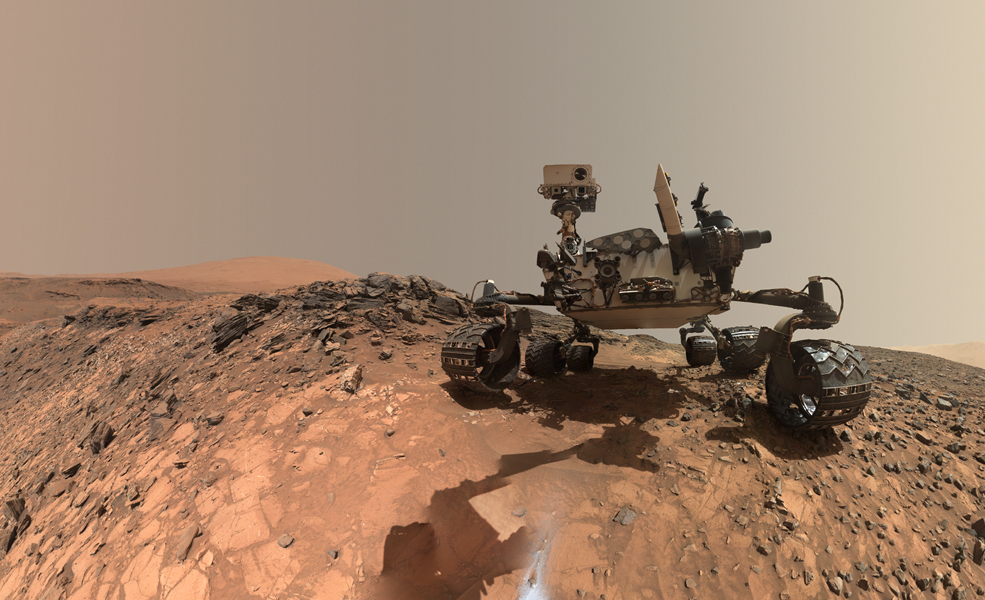Curiosity Finds Biologically Useful Nitrogen on Mars
Posted: Tue Mar 24, 2015 9:40 pm
Curiosity Rover Finds Biologically Useful Nitrogen on Mars
NASA | GSFC | JPL-Caltech | MSL Curiosity | 2015 Mar 24
NASA | GSFC | JPL-Caltech | MSL Curiosity | 2015 Mar 24
A team using the Sample Analysis at Mars (SAM) instrument suite aboard NASA's Curiosity rover has made the first detection of nitrogen on the surface of Mars from release during heating of Martian sediments.
- [url=http://www.jpl.nasa.gov/spaceimages/details.php?id=pia16937][b][i]Curiosity Self-Portrait at 'John Klein'[/i][/b][/url] - [b][i]Credit: NASA/JPL-Caltech/MSSS[/i][/b] [i]This self-portrait of NASA's Mars rover Curiosity combines dozens of exposures taken by the rover's Mars Hand Lens Imager (MAHLI) during the 177th Martian day, or sol, of Curiosity's work on Mars (Feb. 3, 2013), plus three exposures taken during Sol 270 (May 10, 2013) to update the appearance of part of the ground beside the rover. [/i]
The nitrogen was detected in the form of nitric oxide, and could be released from the breakdown of nitrates during heating. Nitrates are a class of molecules that contain nitrogen in a form that can be used by living organisms. The discovery adds to the evidence that ancient Mars was habitable for life.
Nitrogen is essential for all known forms of life, since it is used in the building blocks of larger molecules like DNA and RNA, which encode the genetic instructions for life, and proteins, which are used to build structures like hair and nails, and to speed up or regulate chemical reactions. ...
There is no evidence to suggest that the fixed nitrogen molecules found by the team were created by life. The surface of Mars is inhospitable for known forms of life. Instead, the team thinks the nitrates are ancient, and likely came from non-biological processes like meteorite impacts and lightning in Mars' distant past. ...

